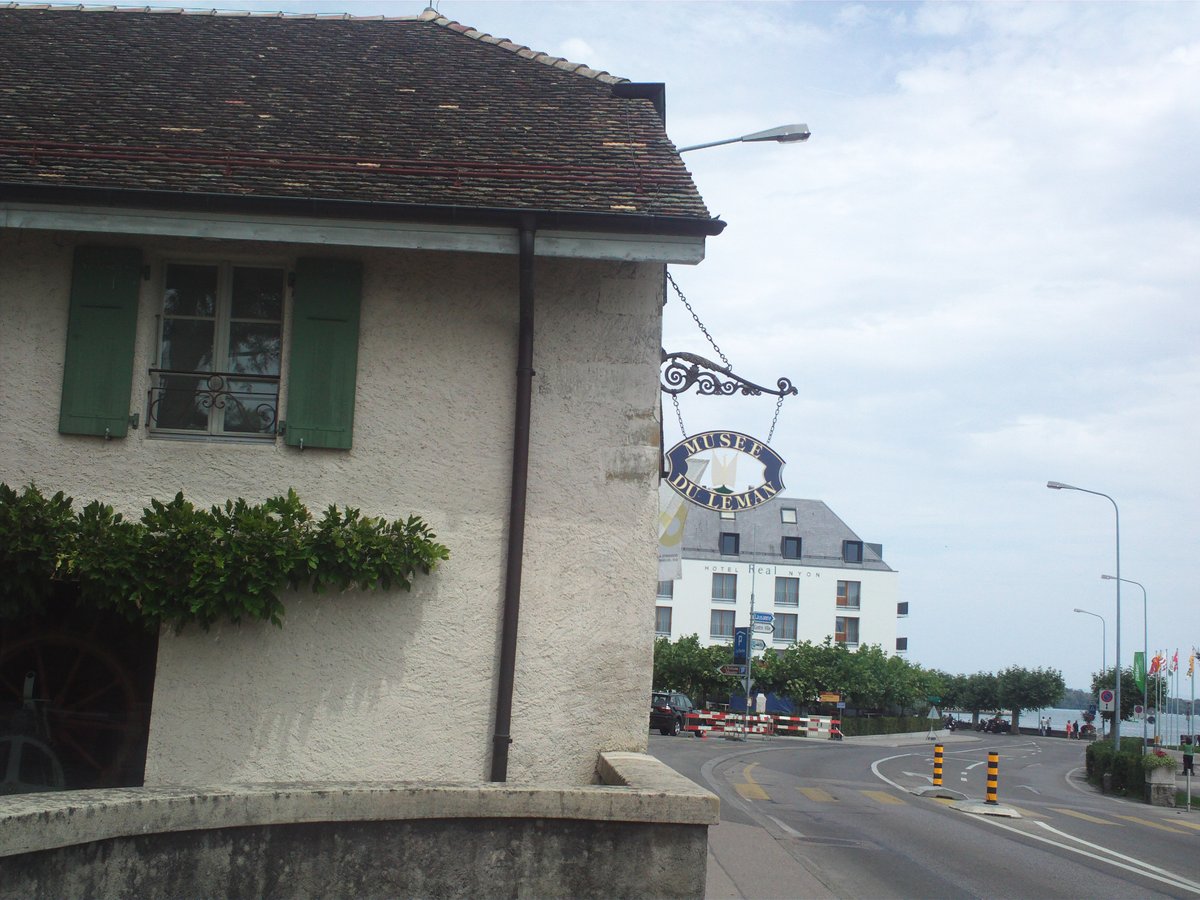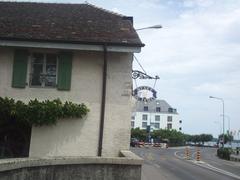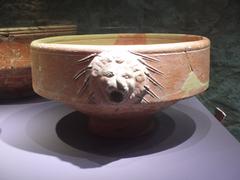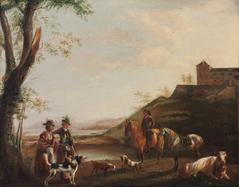
Guide to Visiting Musée du Léman in Nyon, Switzerland
Date: 31/07/2024
Introduction
Nestled in the picturesque town of Nyon, Switzerland, the Musée du Léman offers a unique opportunity to explore the rich cultural and natural history centered around Lake Geneva (Lac Léman). Established in 1954, the museum has evolved into a comprehensive repository of artifacts, exhibits, and collections that narrate the complex relationship between humans and the lake. Whether you are a history enthusiast, nature lover, or simply looking for an enriching day trip, the Musée du Léman provides an insightful and fascinating experience. This guide aims to provide you with all the essential information you need to plan your visit, including the museum’s history, exhibitions, visitor tips, and nearby attractions.
Table of Contents
- Introduction
- History of Musée du Léman
- Exhibitions and Collections at Musée du Léman
- Visitor Information and Tips
- FAQ
- Conclusion
History of Musée du Léman
Founding and Early Years (1954-1968)
The Musée du Léman was founded in 1954 in Nyon, Switzerland, under the initiative of Edgar Pélichet, who was then the head of Vaud archaeology. Initially housed in the former Nyon hospital, the museum opened its doors with three rooms dedicated to fishing, navigation, and birds across a 120 square meter space. Despite initial challenges, the local community rallied to keep the museum operational after Pélichet’s retirement, leading to the formation of the Association Pro Novioduno, which advocated for its continuation amid growing concerns over lake pollution.
Rebirth and Expansion (1975-1989)
In 1975, André Jeanneret, then director of the Museum of Ethnography in Geneva, spearheaded the museum’s reopening. Under his leadership, the museum introduced a multidisciplinary approach to exhibitions. The museum’s exhibition space expanded to 230 square meters, incorporating significant collections such as works by painter Abraham Hermanjat and model maker Aldo Balmas. A milestone was achieved in 1985 with the opening of the largest aquariums in French-speaking Switzerland, drawing a significant increase in visitors. By 1989, the museum received a fixed annual budget from the City of Nyon, allowing for further expansion and professionalization.
Modern Developments (1998-2018)
From 1998 onwards, the museum continued to evolve. A documentation center was established thanks to the Ernest Dubois Foundation, and the museum hosted a multidisciplinary colloquium celebrating limnological studies. The museum’s archives were significantly enriched with donations from renowned oceanographer Jacques Piccard and his father, Auguste Piccard. In 2018, the Compagnie Générale de Navigation sur le lac Léman (CGN) donated its archives and numerous historical objects, further enhancing the museum’s offerings.
Exhibitions and Collections at Musée du Léman
Permanent Exhibitions
Natural Sciences and Aquaria
The natural sciences section, featuring five aquaria, educates visitors about the lake’s biodiversity and ecological challenges. These aquaria, the largest in French-speaking Switzerland, were a major draw from their inception in 1985 (Musée du Léman).
Historical Artifacts and Models
The museum showcases historical artifacts and models that illustrate human interaction with Lake Geneva over the centuries. Notable collections include works by Abraham Hermanjat and Aldo Balmas, acquired in 1975 (Musée du Léman).
The Piccard Family
This section is dedicated to the Piccard family, pioneers in underwater exploration. Jacques Piccard’s personal archives, donated in 1999, and those of his father, Auguste Piccard, donated in 2008, offer insights into underwater exploration history (Musée du Léman).
Temporary Exhibitions
”A Tsunami on Lake Geneva”
This exhibition, running until December 31, 2024, explores the historical event of 563 AD when a massive wave reportedly swept across the lake (My Switzerland).
”Petite Nature”
“Petite Nature” features 36 questions that decode the complexities of Lake Geneva, engaging visitors with its natural environment (Musée du Léman).
Special Collections
Lake Geneva Shipping Company Archives
In 2018, the Lake Geneva Shipping Company donated its archives and historical objects, providing a unique glimpse into the lake’s maritime history (Musée du Léman).
The Fleur Bleue Yacht
The museum, with support from the Fondation Ernest Dubois, restored the Fleur Bleue yacht and a large stained glass window created by the Pierre Chiara workshop in 1908 (Musée du Léman).
Visitor Information and Tips
Visiting Hours
The Musée du Léman is open from Tuesday to Sunday:
- April to October: 10:00 AM to 5:00 PM
- November to March: 2:00 PM to 5:00 PM
Ticket Prices
- Adults: CHF 10
- Seniors and students: CHF 8
- Children (6-16 years): CHF 5
- Families (2 adults and children): CHF 25
- Free admission for children under 6 years old
Special Events and Guided Tours
The museum hosts special events and temporary exhibitions. Guided tours are available upon request (Musée du Léman).
Photographic Spots
With its lakeside location, the museum offers numerous photographic spots, including views of Lake Geneva and the historic town of Nyon.
Travel Tips and Nearby Attractions
- Accessibility: The museum is wheelchair accessible, with an elevator.
- Nearby Attractions: Explore Nyon Castle, the Roman Museum, and the old town. Enjoy a stroll along the lakefront promenade.
FAQ
What are the Musée du Léman visiting hours?
- April to October: 10:00 AM to 5:00 PM
- November to March: 2:00 PM to 5:00 PM
How much are the tickets to the Musée du Léman?
- Adults: CHF 10
- Seniors and students: CHF 8
- Children (6-16 years): CHF 5
- Families: CHF 25
- Free admission for children under 6
Is the museum accessible? Yes, the museum is wheelchair accessible and equipped with an elevator.
Are there guided tours available? Yes, guided tours are available upon request.
What are some nearby attractions?
- Nyon Castle
- Roman Museum
- Old Town of Nyon
- Lakefront promenade
Conclusion
A visit to the Musée du Léman is an immersive journey through the natural and human history of Lake Geneva. The museum’s extensive exhibitions offer a comprehensive understanding of the lake’s ecological and cultural significance. The museum’s commitment to accessibility and family-friendly features ensures that everyone can enjoy the experience. Be sure to check the museum’s official website for updates and detailed information.
References
- Musée du Léman. (n.d.). History of the Museum. Retrieved from Musée du Léman
- My Switzerland. (n.d.). A Tsunami on Lake Geneva. Retrieved from My Switzerland
- Lake Geneva Switzerland. (n.d.). Visit the Musée du Léman. Retrieved from Lake Geneva Switzerland


